13 Early Automatic Weapons That Redefined Firepower
Early automatic weapons have played a crucial role in reshaping modern warfare and influencing firearm design. From the first machine guns to the iconic submachine guns and assault rifles, these weapons revolutionized how battles were fought. Many of these early firearms were pivotal during World War I and II, offering unprecedented firepower and mobility for soldiers on the front lines. Their innovative designs set the stage for the development of more advanced weapons in the following decades. Some of these early weapons have become highly sought after by collectors, with their historical significance adding to their value.
This post may contain affiliate links, which helps keep this content free. Please read our disclosure for more info.
Maxim Gun

The Maxim Gun was introduced in 1884 by Sir Hiram Stevens Maxim and is often considered the first true automatic weapon. Powered by recoil, it could fire continuously as long as the trigger was held down, revolutionizing warfare by providing an overwhelming volume of fire. The Maxim was initially used by the British and other colonial powers, significantly enhancing their battlefield effectiveness during the late 19th and early 20th centuries.
Its influence was profound, with armies quickly adopting versions of the Maxim Gun, deploying it on the battlefield during the early days of World War I. The gun’s capacity to fire several hundred rounds per minute was unprecedented at the time, rendering previous tactical formations obsolete. A deactivated or collector’s example of the Maxim Gun might range in value from $25,000 to $40,000, depending on the condition, provenance, and legal status of the item.
Lewis Gun

Introduced during World War I, the Lewis Gun was one of the first light machine guns and was used by both British and American forces. Its top-mounted pan magazine, which could hold 47 or 97 rounds, set it apart from other machine guns of the time, allowing for sustained fire while being relatively lightweight and portable. The gun was famous for its use in trench warfare, as its design allowed infantry units to maintain suppressive fire over long periods.
Despite its effectiveness, the Lewis Gun’s design became outdated with the development of more advanced machine guns, but it remained in service throughout the early part of the 20th century, including during World War II. For collectors, an original Lewis Gun, particularly those with a well-documented military history, might be valued at around $15,000 to $30,000, depending on its condition and historical relevance.
Fedorov Avtomat

The Fedorov Avtomat, developed by the Russian Empire in the early 1900s, is often cited as the first true assault rifle. Designed by Lieutenant Colonel Vasily Fedorov, it combined the firepower of a machine gun with the mobility of a rifle, a revolutionary concept at the time. The rifle was chambered in 6.5mm and could fire in both semi-automatic and automatic modes, making it versatile in combat situations.
Though the Fedorov Avtomat was limited in production and only saw service in World War I and the Russian Civil War, its design laid the foundation for the development of modern assault rifles, influencing later weapons like the AK-47. Due to its rarity and significance in the evolution of firearms, a well-preserved Fedorov Avtomat might fetch between $40,000 and $60,000, depending on its condition and provenance.
Browning Automatic Rifle
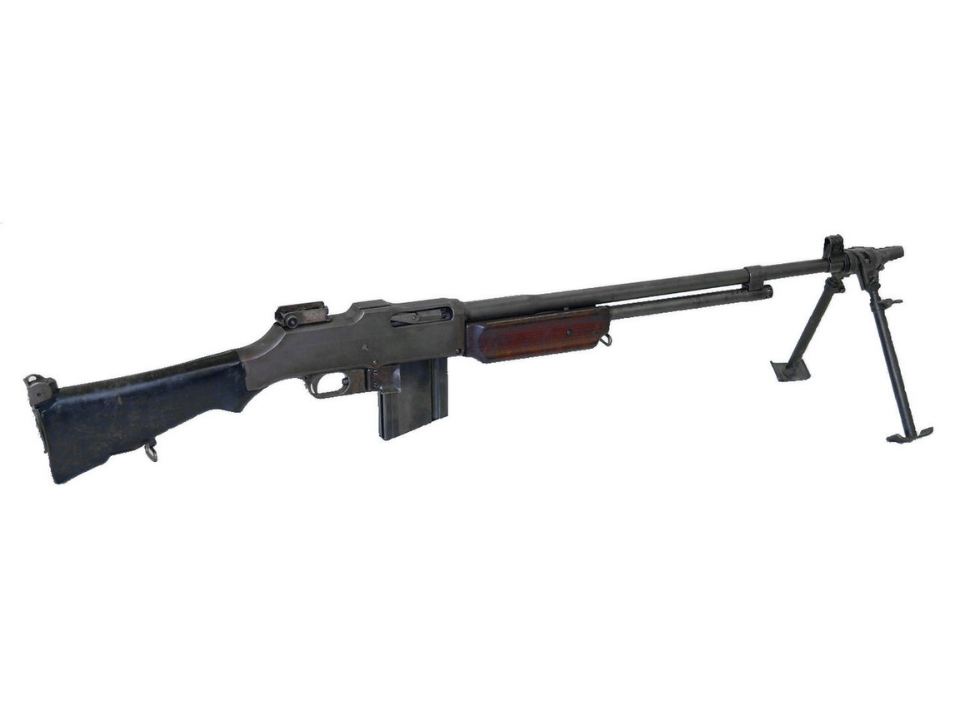
The Browning Automatic Rifle, developed by John Browning and introduced in 1918, became one of the most iconic automatic rifles of the 20th century. The BAR was adopted by the U.S. Army during World War I and remained in service through World War II and beyond. With its powerful .30‑06 caliber, it was capable of providing both semi-automatic and full-automatic fire, making it a versatile weapon for infantry troops.
The BAR became a standard infantry weapon, used for everything from suppressing enemy troops to providing fire support during combat. Although it was replaced by other designs later, the BAR remains an influential weapon in the history of automatic rifles. A well-maintained BAR might command between $10,000 and $20,000, depending on its condition and military provenance.
StG 44
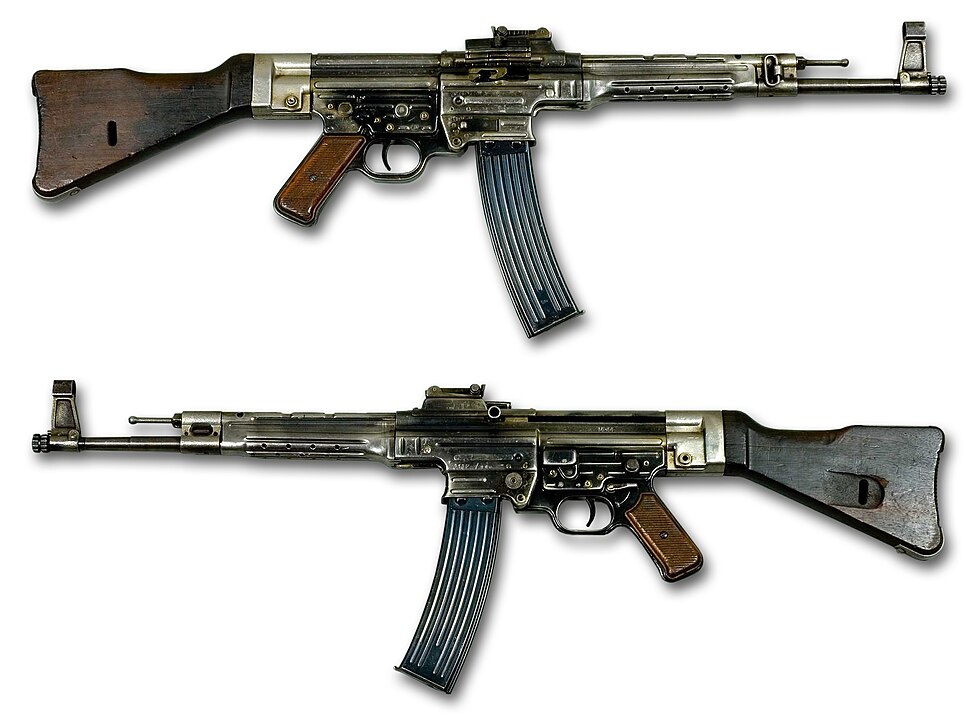
The StG 44, introduced in 1944, is often considered the world’s first true assault rifle, and it had a significant impact on the development of modern firearms. Designed by Hugo Schmeisser in Nazi Germany, the StG 44 used an intermediate cartridge and was capable of selective fire, meaning it could fire in both semi-automatic and fully automatic modes. The rifle’s design was revolutionary, as it provided soldiers with greater mobility and firepower compared to earlier bolt-action rifles and heavy machine guns.
The StG 44’s influence is seen in many of today’s modern assault rifles, such as the AK-47, which directly borrowed from its design. Due to its rarity and historical importance, especially among collectors and military historians, a StG 44 in good condition might be worth anywhere from $100,000 or more, depending on the model and condition.
MP18
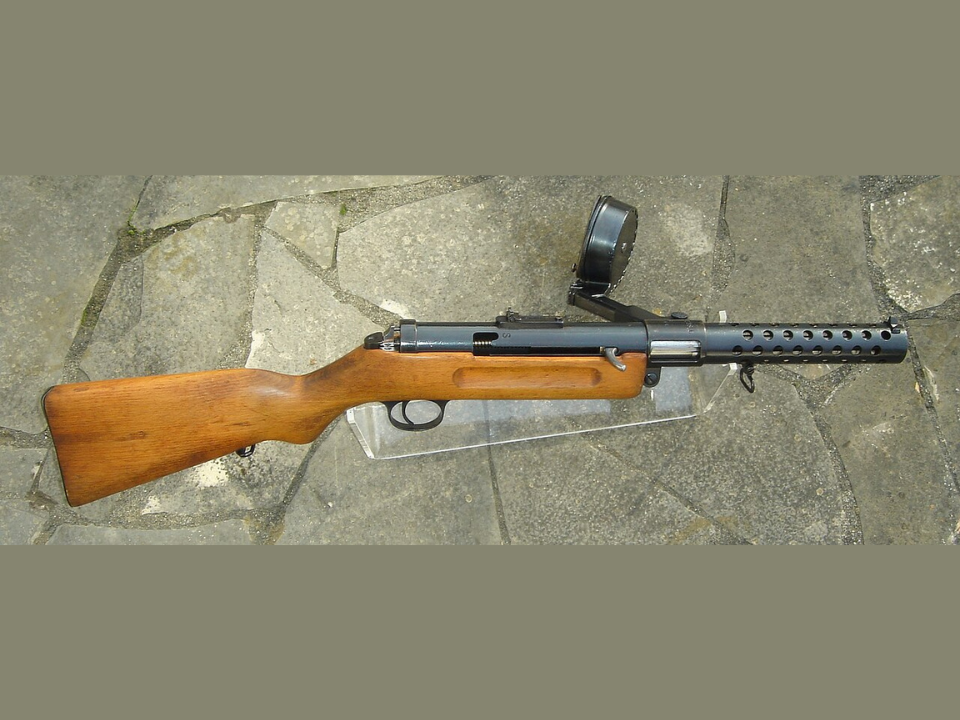
The MP18 was the first submachine gun to see widespread use and was designed by the German Empire during World War I. It was intended to be a weapon for stormtroopers, the German infantry units that engaged in close-quarters combat behind enemy lines. The MP18 was chambered in 9mm and fired fully automatically, providing a high rate of fire in confined spaces.
Its introduction marked a shift in infantry tactics, as submachine guns like the MP18 were ideal for urban warfare and trench combat. The MP18 was also one of the first firearms to use a detachable magazine, further influencing later designs. Due to its limited production and historical significance, an MP18 might be valued at $80,000 or more, depending on its provenance and condition.
Hotchkiss M1909
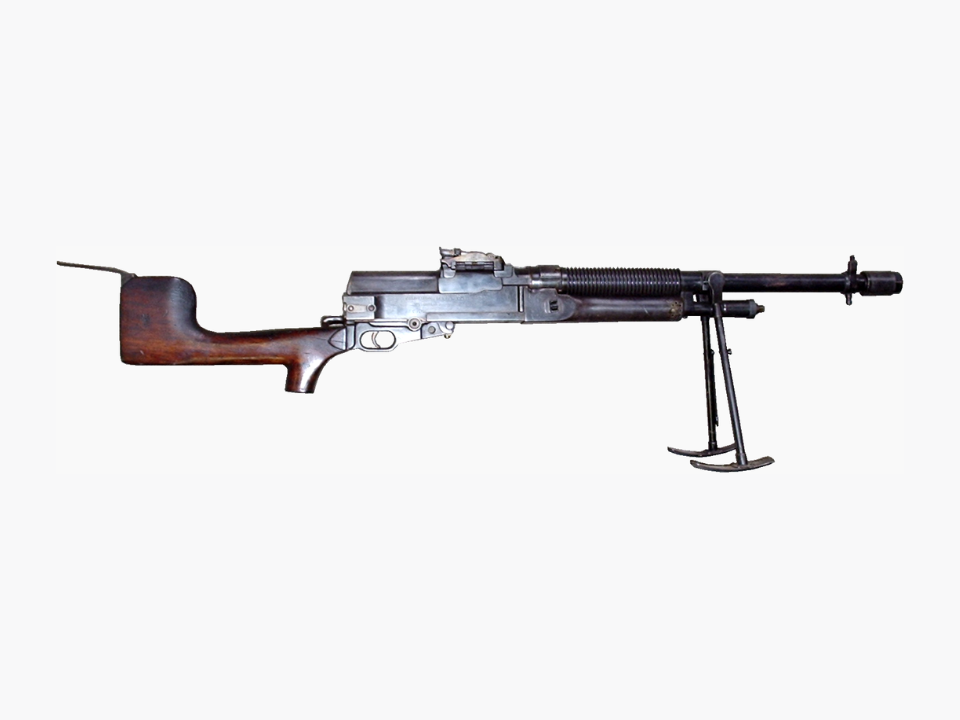
The Hotchkiss M1909, developed by the French, was one of the earliest successful light machine guns. It was designed to be a portable, squad-level weapon capable of providing automatic fire in a wide range of combat situations. The Hotchkiss M1909 was chambered in 8mm Lebel and featured a unique, belt-fed design that allowed for sustained fire.
Its ruggedness and portability made it a valuable asset during World War I, and it continued to be used by the French Army throughout the interwar period and beyond. As a collectible, the Hotchkiss M1909 can fetch between $12,000 and $25,000, depending on the condition and rarity of the specific model.
Vickers Machine Gun
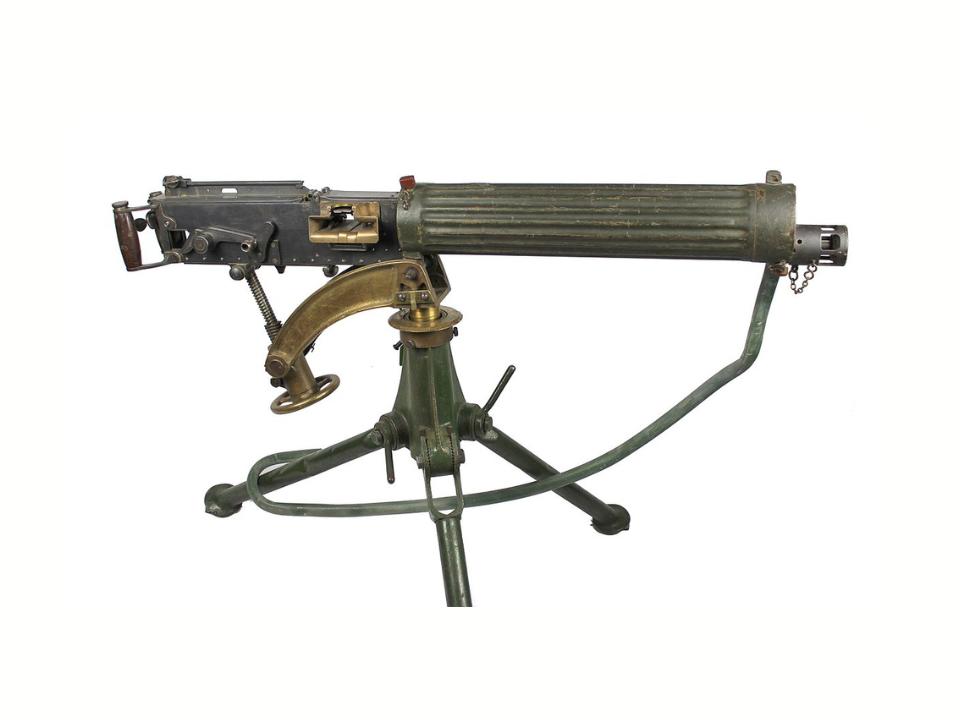
The Vickers Machine Gun, a British design, evolved from the earlier Maxim Gun and became one of the most reliable and durable machine guns of its time. The Vickers was used extensively by British forces during World War I and World War II, providing sustained automatic fire. The gun’s water-cooled barrel allowed it to maintain high rates of fire for extended periods, making it ideal for defensive positions and suppressive fire.
Although heavier than newer models, the Vickers’ rugged design and dependability ensured that it remained in service for many decades. The value of a Vickers machine gun today can range from $18,000 to $30,000, depending on its condition and historical significance.
Thompson Submachine Gun
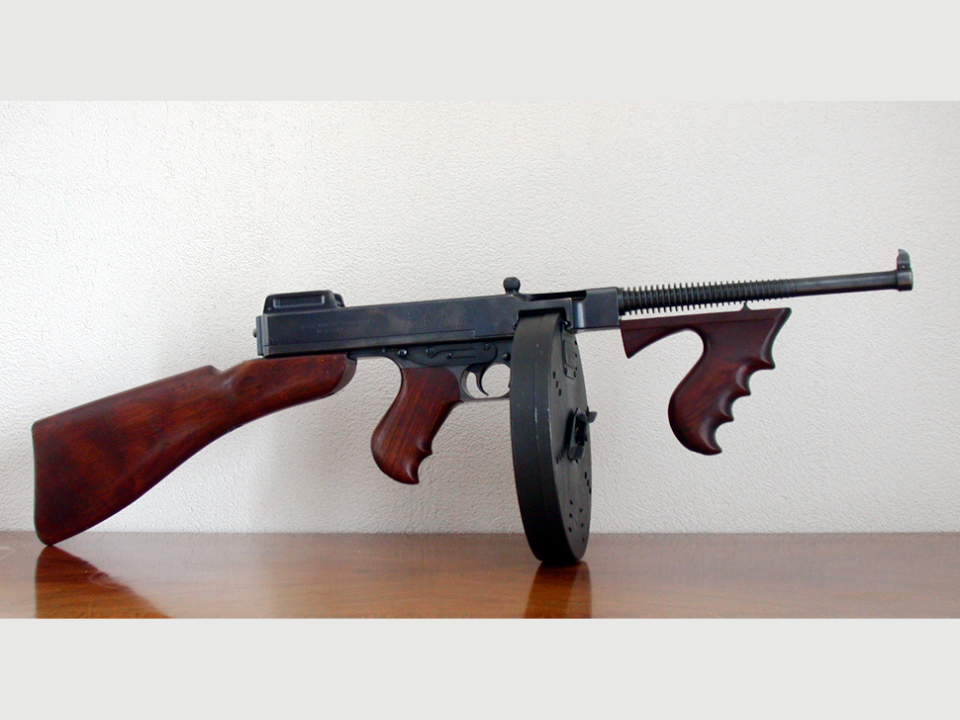
The Thompson Submachine Gun, commonly known as the “Tommy Gun,” was designed in 1919 by John T. Thompson and became iconic for its use during Prohibition and by both law enforcement and criminal groups. It featured a powerful .45 ACP cartridge and could fire at a high rate of speed, making it effective in close-quarters combat. The Thompson was one of the first submachine guns to be mass-produced and set the standard for automatic weapons used in urban warfare.
Its distinctive design, including the iconic drum magazine, helped establish the Thompson’s reputation as a symbol of both law enforcement and gangster culture. The value of a well-preserved Thompson SMG, especially a military model with historical provenance, might range from $25,000 to $50,000, depending on the model, condition, and legality for ownership.
MG34

Introduced in 1934 by Germany, the MG34 was one of the first general-purpose machine guns, capable of being used in both light and heavy machine gun roles. It featured a high rate of fire, around 800 to 1,200 rounds per minute, and was used throughout World War II. The MG34 was designed for flexibility, with its quick-change barrel and ability to be mounted on vehicles or tripods, making it a versatile weapon in various combat situations.
While it was eventually replaced by the MG42 due to production difficulties and its complex design, the MG34 remains one of the most iconic early automatic weapons. Due to its rarity and historical importance, a well-preserved MG34 can fetch between $30,000 and $60,000, depending on condition and historical documentation.
MG42
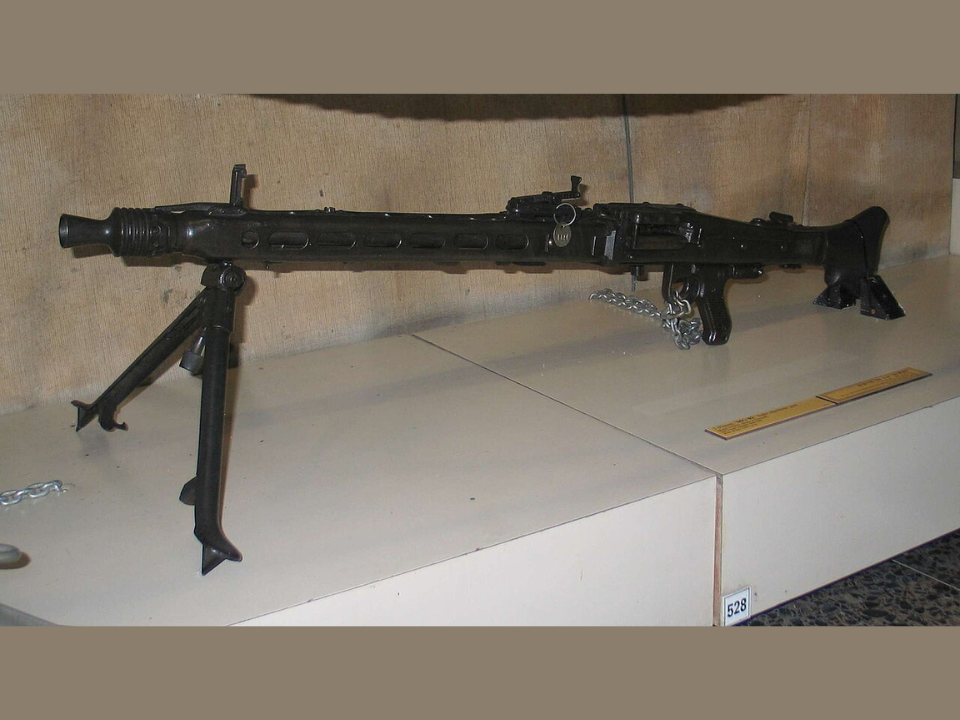
The MG42, introduced by Germany in 1942, is considered one of the most effective and influential machine guns ever created. It was known for its incredible rate of fire—up to 1,500 rounds per minute—which gave it the nickname “Hitler’s Buzzsaw.” The MG42 was designed with durability and ease of maintenance in mind, and its quick-change barrel and universal mount made it highly versatile in battle.
This machine gun’s design influenced postwar firearms, including the NATO standard MG3. Given its widespread use and legendary status, an original MG42 can be highly valuable, with prices ranging from $30,000 to $50,000, depending on condition, origin, and legal status.
Sten Gun
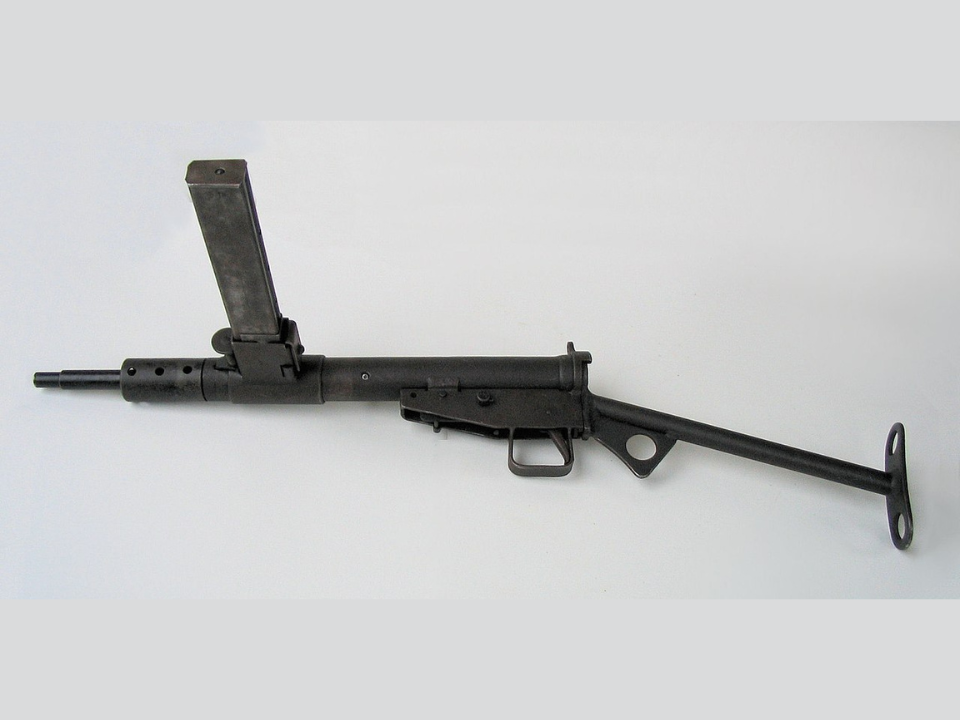
The Sten Gun, designed in the UK during World War II, was a simple and cost-effective submachine gun used by British forces and resistance groups. Its minimalist design allowed for rapid production and deployment, making it a critical tool in the fight against the Axis powers. The Sten was chambered in 9mm and featured a low rate of fire, but its compact size and ease of use made it ideal for close-quarter combat.
While it was not as durable as other submachine guns, the Sten proved invaluable during the war. Due to its significance and widespread use, a Sten Gun in good condition might range from $7,000 to $12,000, with military versions typically fetching higher prices due to their historical value.
M3 Submachine Gun

Developed during World War II as a low-cost alternative to the Thompson submachine gun, the M3 Submachine Gun became one of the most iconic automatic weapons of the war. It’s simple design featured a stamped metal body and a straight blowback mechanism, which kept production costs low while maintaining reliability. The M3 was chambered in .45 ACP and had a relatively low rate of fire compared to other submachine guns but was still highly effective in close-range combat.
The M3 was widely used by American troops in World War II and the Korean War. Collectors value the M3 Submachine Gun for its historical significance, with prices typically ranging from $5,000 to $10,000, depending on condition and the legal status of the firearm.
This article originally appeared on Avocadu.
